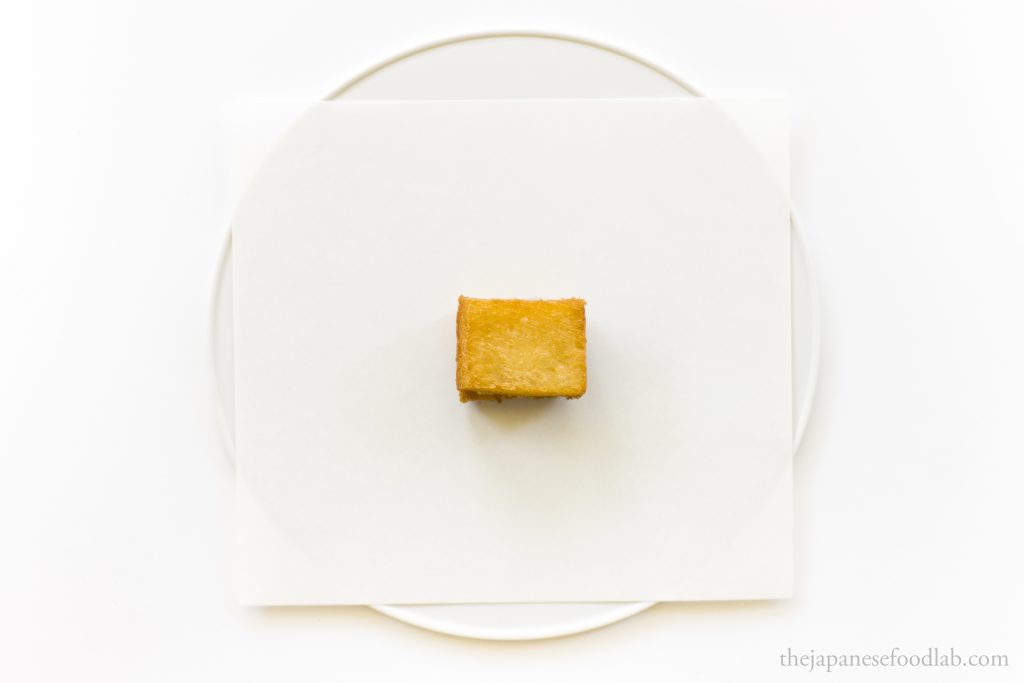
Having covered the science of tempura oil and what is the best oil for tempura, we thought we’d dive into the best recipe that exemplifies how tempura chefs showcase their choice of oil.
Whilst not strictly tempura, the deep fried prawn paste sandwich is a signature dish that can be found served by any tempura restaurant affiliated with the Kyoboshi (京星) lineage of tempura and many other famous establishments. This of course includes the legendary Tempura Nanachome Kyoboshi (七丁目京星) by Shegeya Sakakibara (榊原茂弥) and Tempura Kyoboshi (京星) in Kyoto by Toshinori Sakakibara (榊原俊徳).
It consists of only shrimp paste sandwiched between two small rectangular pieces of Japanese milk bread (Shokupan/食パン). This mini-sandwich is then fried in tempura oil without any addition of batter and served when golden brown.
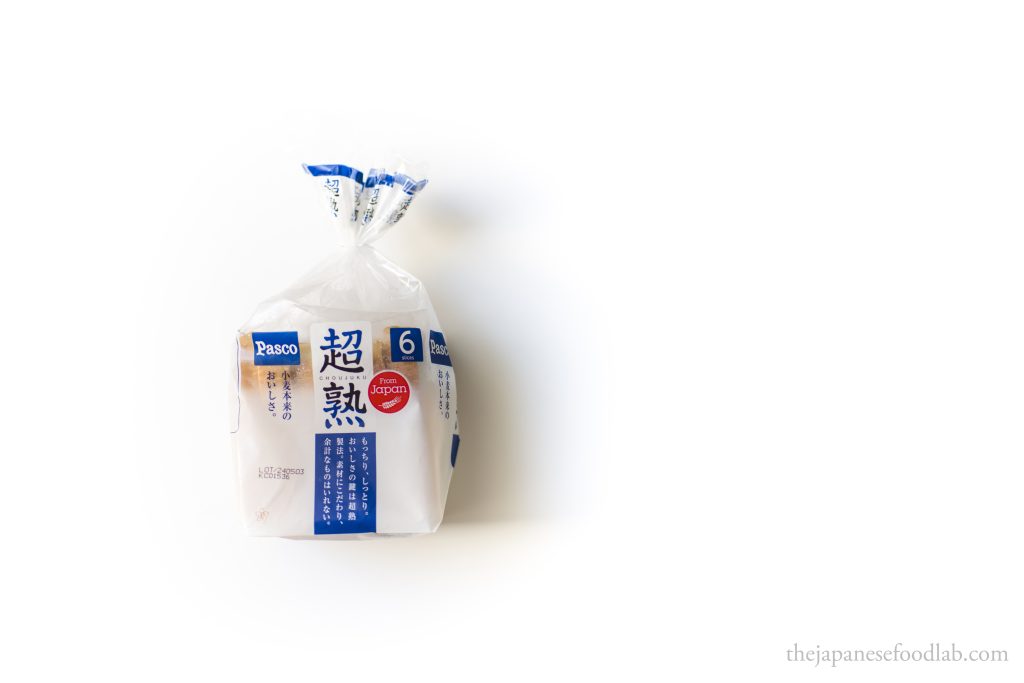
As the bread absorbs some of the oil during the frying process, it allows guests to see for themselves that only high quality fresh frying oil is used and that the oil is not reused from previous days. As deep frying also caramelizes bread at a much faster rate as compared to a toaster, it’s possible to obtain a crispy outer crust whilst still maintaining a little of the milk bread’s fluffiness inside.
The interesting thing about this dish is that it was supposedly introduced from China through trade in Nagasaki before evolving into the form we know today. You can still buy these sandwiches in places around the prefecture though they seem to be getting less and less common. Known as Hatoshi, the word Ha/蝦 means shrimp in Cantonese and toshi sounds like ‘toast’ to mean prawn toast. As with the origin of many names, it’s hard to verify if this is accurate or just a coincidence, but this has been the meaning that has been transmitted by word of mouth over the years.
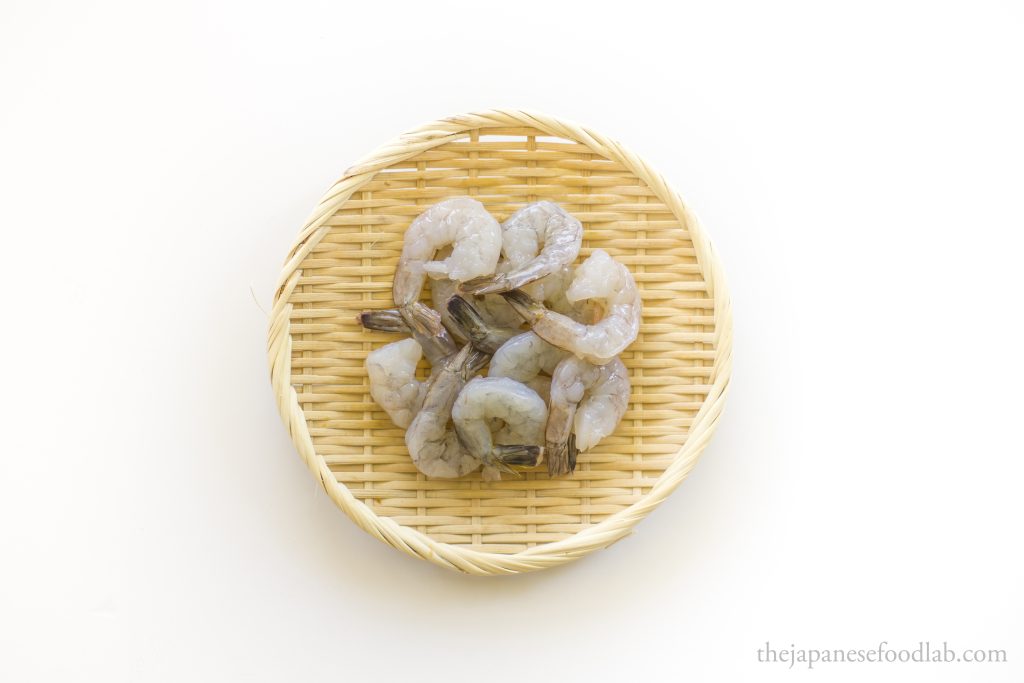
The shrimp paste used for this recipe calls for fresh shrimp, not fermented shrimp paste which is the kind you’d usually find in a jar in an asian supermarket. Stay away from those made in South East Asian because they’re almost guaranteed to be fermented, especially if they’re not stored in the refrigerated section.
Even within japan, it’s surprisingly hard to buy shrimp paste (ebi surimi/エビすり身) and so your best bet would be to make your own. To make your shrimp paste for this recipe, simply add peeled and deveined prawns to a suribachi mortar and grind into a smooth paste. If not, you can try substituting with fish paste though it wouldn’t be the same recipe anymore.
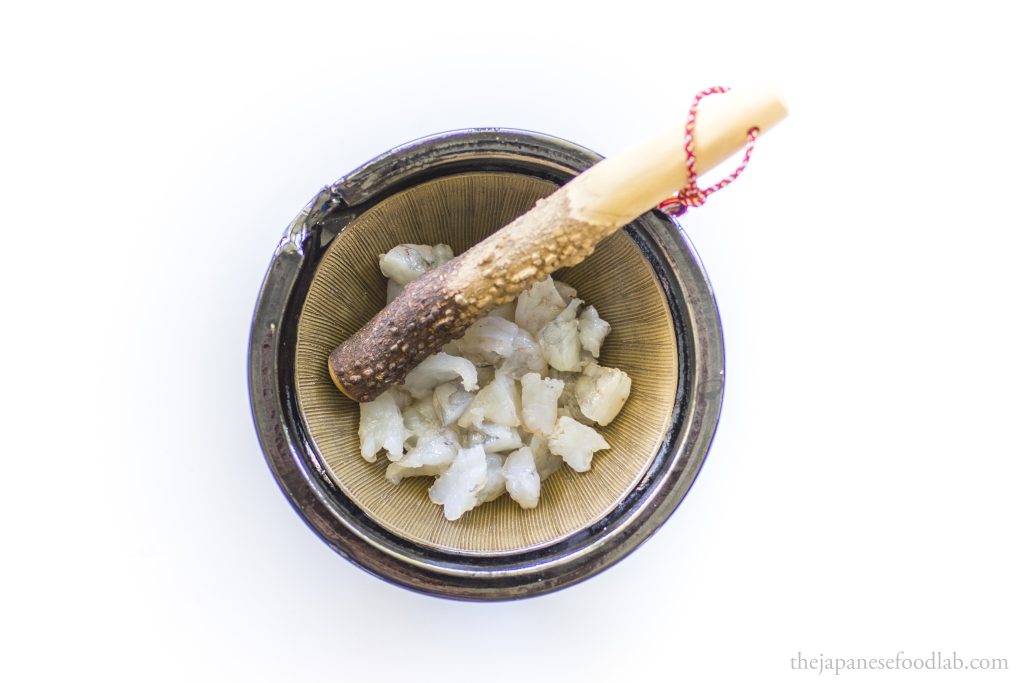
Hatoshi Tempura Recipe
Japanese milk bread or any other white sandwich bread
Fresh prawns
Deep frying oil
To begin, peel and devein the prawns before grinding them into a paste in your mortar or pestle. Some recipes for Hatoshi leave some chunks in the paste for textural contrast but we prefer the smooth version. If aiming for the smoothest texture possible and are making a large batch, pass the paste through a fine mesh sieve.
Using a sharp knife, cut off the crust on the milk bread as the crust has a tendency to burn during frying. Next, cut the bread into 5cm by 3cm pieces. A sharp knife is crucial as a blunt knife will compress and drag the delicate soft bread when cutting downwards, ruining the fluffy texture.
If you can’t find Japanese milk bread, any white sandwich bread will work but we have found that some brands absorb more oil whilst some brands also brown quicker if they have added sugar so you’ll want to test for yourself what works locally.
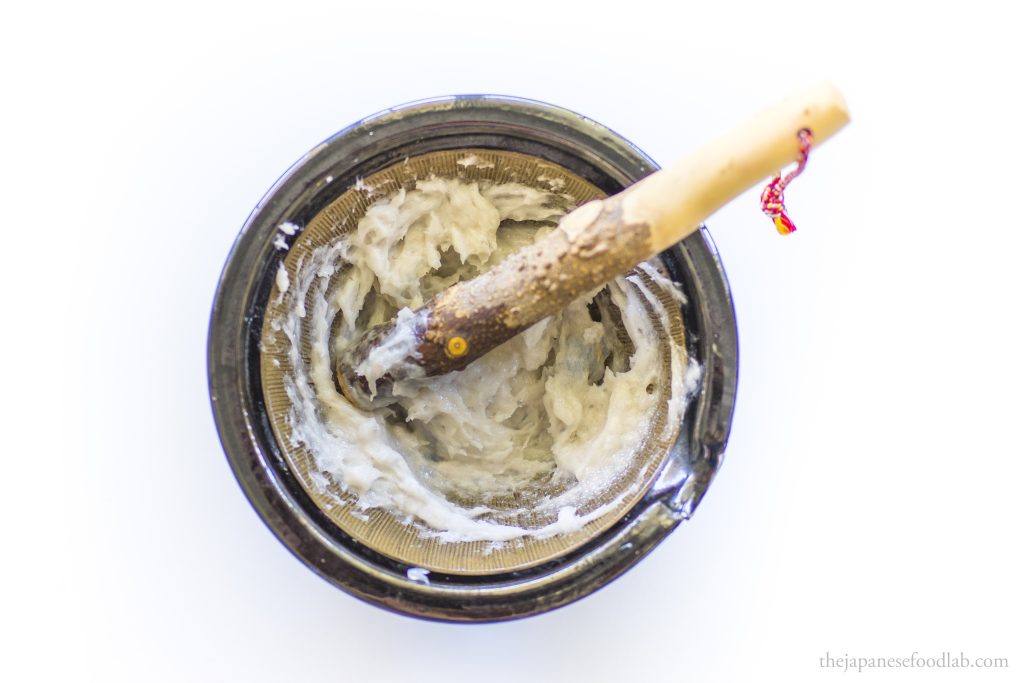
Spread a thin layer of fresh shrimp paste on the bread and sandwich with another piece of bread on top. They should be made closer to service as they do not store well. Shrimp paste goes bad very quickly and sandwich bread has a tendency to dry out in a fridge, even when cling wrapped or stored in an airtight container.
Heat your deep frying oil to 180°C before adding the sandwich in. You’ll find the sandwich floating immediately to the top. There is no need to submerge it into the oil. When one side of the sandwich has cooked until golden brown, flip it over to cook the other size. The heat of the oil should penetrate from the sandwich and cook the shrimp paste inside.
Once golden brown on both sides, remove from the oil and blot on tempura paper to remove any excess oil before serving. The sandwich should be eaten immediately. The timing on this dish is tricky as it depends on the oil temperature, type of bread and freshness of the bread so judging its doneness by color is the most accurate.
Our go to preference for this dish is a mixture of rice bran oil with a dash of toasted sesame seed oil to flavor the sandwich.

Notes:
It’s difficult to grind whole prawns into paste using a Japanese pestle and mortar so we recommend cutting the prawns into very small pieces before grinding. Otherwise you can use a food processor to grind down the prawns. If using a food processor, only blend it using the pulse function else the prawns will be over blended. If blended for too long, you will get a sticky white paste that yields a stringy texture when cooked. The paste should still have some gray color to it.
The prawn paste swells when cooked so remember to only apply a thin layer between the pieces of bread, otherwise the ratio of prawn to bread will be too high.
Surprisingly, one of the hardest parts of this recipe is to cut the milk bread into even rectangles given how delicate and soft it is. Using anything but the sharpest knife would result in the bread deforming or being torn. Our advice is to use a long slicing motion pulling the knife towards you to cut the bread with very little downwards force.
Depending on your oil temperature, the bread cooks very fast in the oil, with each side requiring less than a minute. This is one of those dishes that taste their best immediately after cooking. If left to cook, they no longer have that melt in your mouth feel to them. If anything, their lifespan is even shorter than tempura after cooking.